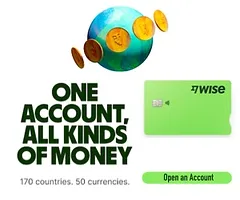Discover how travel cancellation insurance can protect your investments in the tourism market. Learn about coverage, claims, and key benefits.
BANK REWARDS PROGRAMMES IN NEW ZEALAND – HOW THEY WORK AND WHY BANKS OFFER THEM
In New Zealand, bank points or rewards programmes are designed to encourage card usage, customer loyalty, and digital transactions, with perks ranging from Airpoints to cashback. Major banks like ANZ, BNZ, Westpac, and ASB offer structured programmes, while others like Kiwibank and The Co-operative Bank focus on specific cashback or travel rewards. These benefits aren’t free—funded by merchant fees, interest charges, and strategic partnerships—but they can add real value for Kiwis when used wisely. The key is balancing the perks with responsible spending.

How rewards programmes work in New Zealand
In Aotearoa, bank rewards programmes are crafted to nudge everyday spending towards plastic instead of cash. Tap your card at Countdown, Z Energy, or online, and you start racking up Airpoints, Flybuys, cashback credits, or even gift vouchers. These systems are regulated by the Reserve Bank of New Zealand (RBNZ) and the Financial Markets Authority (FMA), ensuring fair play and transparency.
For most banks, enrolment is straightforward: sign up through the bank’s app or website, and your eligible purchases begin generating points automatically. Typically, you’ll earn 1 point per $1 to $2 spent, or Airpoints at rates like 1 per $75. Redeeming is just as easy, often through online platforms, letting you exchange them for flights, retail vouchers, electronics, or straight-up bill credits.
Common rewards types in New Zealand
Airpoints: Linked to Air New Zealand, ideal for frequent flyers aiming for upgrades or free tickets.
Flybuys: Redeemable at supermarkets, fuel stations, and major retailers nationwide.
Cashback: A direct rebate on purchases, often 0.5% to 1% back, paid into your account.
Retail vouchers: Credits for Trade Me, Farmers, Mitre 10, or JB Hi-Fi.
Premium perks: Lounge access, travel insurance, or extended warranties.
The catch? Fees and interest. Some rewards cards come with annual fees up to $200, and carrying a balance means paying interest that can quickly wipe out the perks. Responsible spending is the secret sauce to making these programmes genuinely rewarding.
Major banks and their rewards programmes
Most large New Zealand banks have carved out niche loyalty schemes to capture different segments of the market. Each offers a mix of travel rewards, retail points, or cashback, aiming to keep customers sticky and spending.
Overview of leading banks
ANZ: Runs ANZ Rewards and Airpoints, offering 1 Reward point per $1 or Airpoints at 1 per $75 spent. Premium cards like Rewards Black add travel insurance and higher earn rates.
BNZ: Offers BNZ Advantage (Reward Points) and Flybuys, with Visa Platinum cards earning 1 point per $1, convertible to vouchers, flights, or Qantas Points.
Westpac: Provides hotpoints and Airpoints cards, including Airpoints Platinum, with perks like retail redemptions or 1 Airpoint per $59 spent.
ASB: Features True Rewards and Visa Rewards, with 1 True Reward dollar per $100, redeemable at Farmers, House of Travel, or for cashback.
Kiwibank: Partners with Air New Zealand to offer Airpoints Platinum, earning 1 Airpoint per $75 plus lounge benefits and insurance.
Outside the big five, regional and community-focused banks keep it simple. The Co-operative Bank gives cashback at 0.5% on debit spending, TSB provides capped cashback on its Visa, and SBS offers modest rebates tailored to Southland locals. American Express also plays a significant role, with Membership Rewards cards allowing transfers to Airpoints, Velocity, or hotel partners.
These programmes are not one-size-fits-all: frequent flyers lean towards Airpoints-linked cards, cashback appeals to budget-conscious Kiwis, and retail rewards attract everyday shoppers. The trick is matching your spending habits with the bank’s scheme to maximise returns.
Why banks give rewards and how they fund them
On the surface, it might look like banks are giving away free flights and vouchers, but the economics tell a different story. Rewards programmes are carefully engineered to drive card usage, boost transaction volumes, and ultimately fatten bank profits.
Funding sources for rewards
Merchant fees: Every time you tap, merchants pay banks interchange rates of 0.5%–2%. A slice of this funds your points.
Interest charges: Kiwis carrying balances get slugged with rates up to 20% p.a., subsidising rewards for everyone else.
Partnership deals: Airlines like Air New Zealand or retailers like New World co-finance points to pull in more customers.
Data monetisation: Spending data (anonymised) is valuable to marketers keen on consumer insights.
Research from the University of Auckland shows rewards programmes increase card usage by 20–30%, giving banks higher revenue streams. They’re not charity—they’re strategy. By dangling points, banks keep you loyal and spending more often, recouping costs through fees and partnerships. It’s a win-win if you pay off balances monthly, but a trap if you don’t.
The bottom line? Rewards in New Zealand are a smart financial tool if handled responsibly. Used wisely, they can net hundreds in value yearly, whether through Airpoints for a Fiji holiday or cashback to ease grocery bills. Used poorly, they’re a debt trap. The real winners are disciplined spenders who extract value without giving banks the upper hand.
YOU MAY ALSO BE INTERESTED









